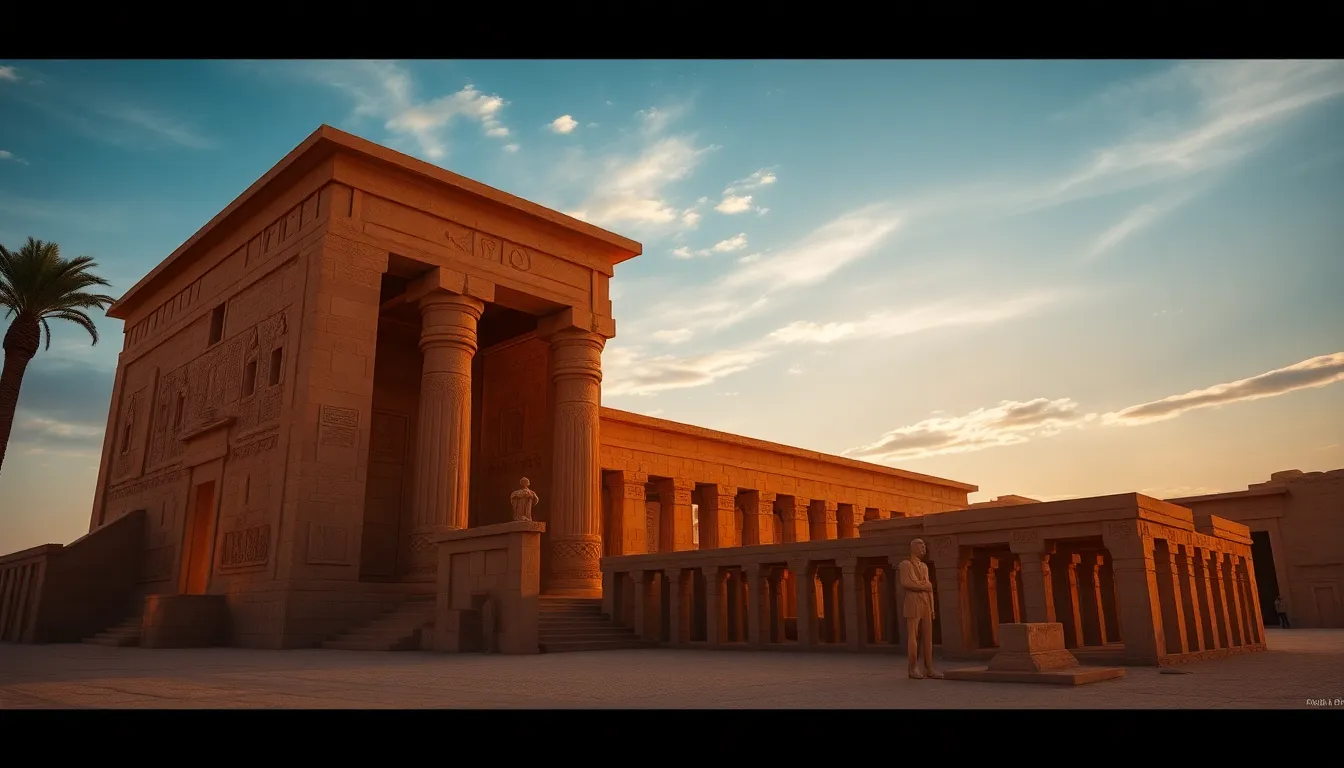The Temple of Medinet Habu: The Artistry of Ramses III
I. Introduction
The Temple of Medinet Habu, located on the west bank of the Nile near Luxor, stands as one of the most significant archaeological sites in Egypt. This grand temple complex is dedicated to the mortuary cult of Pharaoh Ramses III, one of the last great pharaohs of the New Kingdom. His reign marked a period of prosperity and artistic achievement, making Medinet Habu a crucial reflection of ancient Egyptian history and culture. This article aims to explore the artistry and cultural significance of the temple, highlighting its architectural features, artistic elements, and role in religious practices.
II. Historical Context of Ramses III
Ramses III ruled from 1186 to 1155 BCE, during the Twentieth Dynasty of ancient Egypt. He is often regarded as the last great ruler of the New Kingdom, a time characterized by wealth, power, and monumental construction. Ramses III faced significant political and social challenges, including invasions by the Sea Peoples and internal strife. In response to these threats, he fortified Egypt’s borders and led military campaigns, which are vividly depicted in the temple’s reliefs.
The construction of Medinet Habu served not only as a place of worship but also as a powerful symbol of Ramses III’s authority and divine legitimacy. Through the temple, he sought to reinforce his image as a protector of Egypt and a devotee of the gods.
III. Architectural Features of Medinet Habu
The layout of Medinet Habu is remarkable, featuring a series of courts, halls, and sanctuaries designed in a way that reflects the grandeur of Ramses III’s reign. The temple’s entrance is marked by a massive pylon, leading into a courtyard surrounded by colossal columns adorned with intricate carvings.
- Innovations in Design: The temple showcases innovations in architectural design, including the use of large stone blocks and the incorporation of decorative elements that enhance its visual appeal.
- Comparison with Other Temples: Compared to other temples of the period, such as Karnak and Luxor, Medinet Habu displays a unique architectural style that combines traditional elements with personalized features to commemorate Ramses III.
IV. Artistic Elements and Iconography
The interior of Medinet Habu is adorned with stunning reliefs and carvings that depict various scenes from Ramses III’s life and the mythology of ancient Egypt. The artistry within the temple is notable for its attention to detail and the use of vibrant colors.
- Reliefs and Carvings: The walls feature intricate reliefs depicting important events, such as military victories and offerings to the gods.
- Symbolism and Themes: Common themes include the triumph of good over evil, the divine protection of the pharaoh, and daily life in ancient Egypt.
- Depictions of Gods and Daily Life: The artwork intricately depicts gods like Amun and Hathor, as well as scenes showing agricultural activities and offerings, providing insight into the spiritual and everyday life of ancient Egyptians.
V. The Role of Medinet Habu in Religious Practices
Medinet Habu served as a vital center for worship and religious rituals dedicated to Ramses III and the gods of ancient Egypt. The temple was integral to the cult of Ramses III, wherein the pharaoh was revered as a divine figure.
- Worship and Rituals: Daily offerings were made to the gods, and priests conducted rituals to ensure the pharaoh’s favor in the afterlife.
- Significance in the Cult: The temple reinforced the belief in the pharaoh’s divinity, emphasizing the connection between the king and the gods.
- Festivals and Ceremonies: Various festivals, including the Opet Festival, were celebrated at Medinet Habu, attracting large gatherings and reinforcing communal ties through shared worship.
VI. Preservation and Archaeological Discoveries
Today, Medinet Habu is an important site for archaeological research and preservation efforts. The temple has undergone various restoration projects to maintain its structural integrity and aesthetic beauty.
- Current State of Preservation: While certain areas have suffered from erosion and neglect, ongoing efforts aim to preserve the site for future generations.
- Major Discoveries: Archaeologists have uncovered numerous artifacts, inscriptions, and additional structures that provide insight into the temple’s historical context.
- Protection Efforts: International collaborations and local initiatives are in place to protect and restore Medinet Habu, highlighting its significance as a cultural heritage site.
VII. Medinet Habu’s Influence on Later Egyptian Art and Architecture
The artistic and architectural innovations seen in Medinet Habu have left a lasting impact on subsequent generations. The temple’s design and decoration served as a model for later pharaonic temples.
- Influence on Subsequent Generations: The grandeur of Medinet Habu inspired later temples, reflecting the enduring legacy of Ramses III.
- Evolution of Temple Design: Elements such as the pylon entrance and courtyard layout became standard features in later temple constructions.
- Legacy of Ramses III: Ramses III’s contributions to art and architecture are evident in the stylistic developments that followed his reign, reinforcing his status as a significant figure in Egyptian history.
VIII. Conclusion
In summary, the Temple of Medinet Habu stands as a testament to the artistry and cultural significance of Ramses III. Through its architectural grandeur, intricate artwork, and role in religious practices, the temple encapsulates the essence of ancient Egyptian civilization. The preservation of this site is crucial not only for understanding the past but also for appreciating the rich heritage of artistry that continues to inspire exploration and study. As we delve deeper into the mysteries of ancient Egypt, Medinet Habu remains a key site for uncovering the legacy of one of its most fascinating pharaohs.




